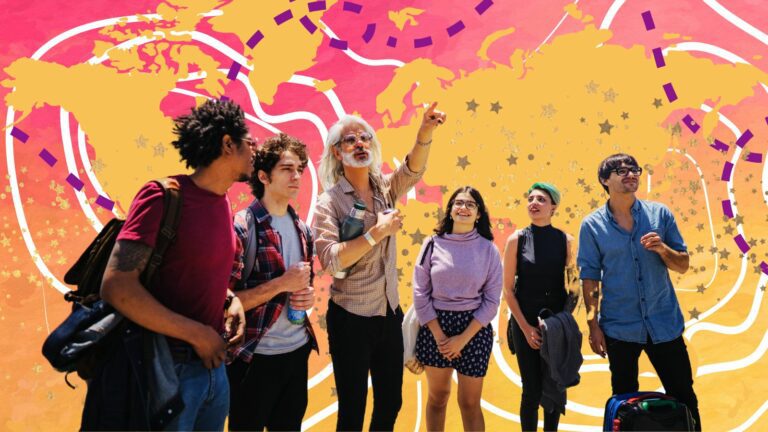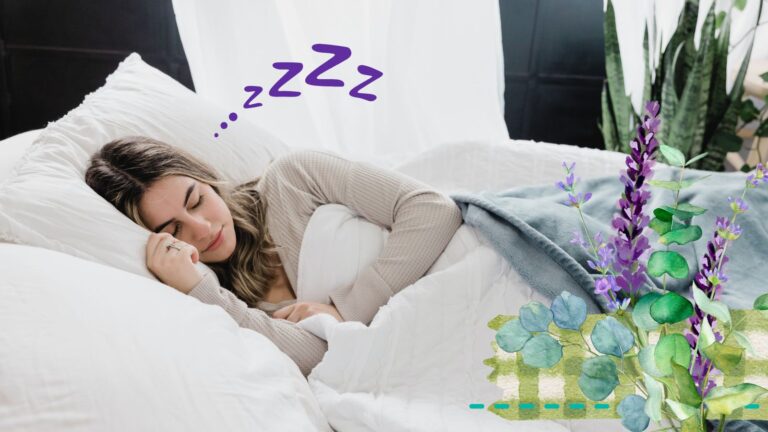How to Plan a Year of Full-time Travel
One of the things I struggled with the most when I first started planning my Big Trip was HOW to plan it.
Traveling for a year (or more) is a BIG task, and even if you’re the type of person who prefers to go with the flow, you have to start somewhere to flow FROM.
The world is huge, and there’s so much to do and see…where do you start? How do you fit in all the things you want to do? How do you PAY for it all?
I’ve been traveling full-time for two years now, and honestly, I still struggle with this sometimes. Having the freedom to (basically) go anywhere and do anything feels like almost TOO MUCH freedom. It’s impossible to make a choice because I have TOO MANY choices!
Just this year I finally figured out a system for planning a “nomad life” e.g. long-term traveling for more than 3 months. I’ve seen some other nomads and long-term travelers ask about planning for their own trip, so I thought I’d share my system and show how I do it.
This is how to work through the nitty-gritty of travel planning: where to go, how to get there, and where you’ll stay once you arrive.
Just Gone Wandering is supported by readers! This post contains affiliate links. If you click on a link and buy something, I get a small percentage at no extra cost to you. Your support helps keep this blog running— thank you! Read full disclosure here.
Pre-Planning
The goal of this system is to
- Figure out a general travel plan for the next year (or more, if you’re ambitious)
- Decide on a budget
- Match your plan to your budget and create concrete travel plans
Even if all you want to do is a general “see the world” wish, you have to start somewhere. Making a travel wishlist, creating a travel calendar, and using them to make a travel plan will give you the structure needed to live a nomadic lifestyle without overpaying on accommodation, running into holiday crowds or missing out on life-changing experiences because you went somewhere in the wrong month.
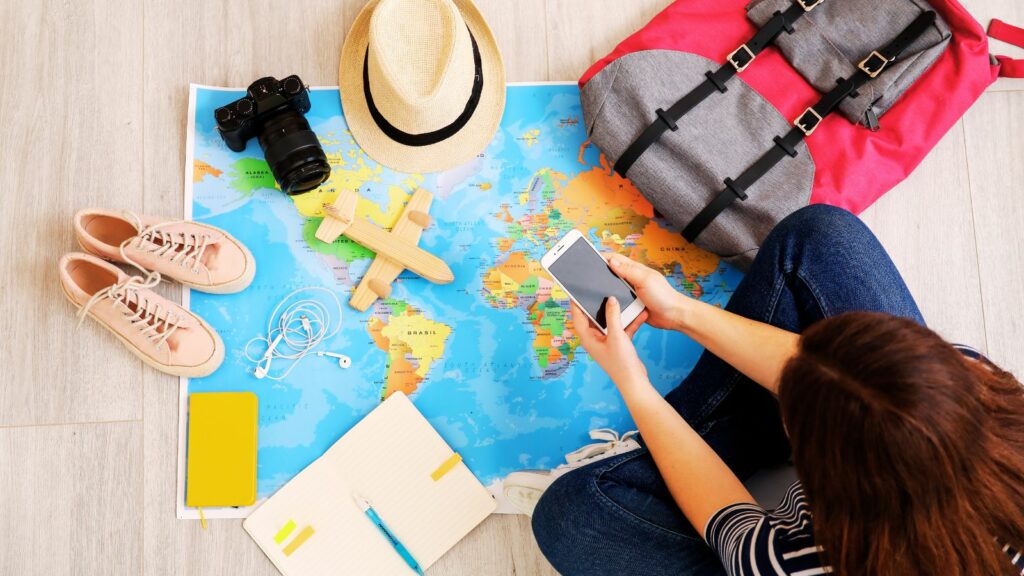
Step 1: Consider your interests
This is the part that’s gonna take the longest.
First, make a list of what you’re interested in doing and/or seeing during your travels. Start with a general idea (beaches, history, city life) or even specific, top 10 must see before you die kinda stuff. Or both!
What do you see yourself doing while you’re traveling? Focus on that.
As an example: my interests are a mix of historical locations (like UNESCO World Heritage Sites), cultural stuff, train routes, unique adventure tours (like the Kinabatangan River cruise in Borneo) and digital nomad communities.
When I worked on my travel plan for last year, I started by thinking of what historical or cultural or natural beauty thing I want to see, and used that as a starting point. Last year, I wanted to see a lot of stuff in Asia, so I aimed for that part of the world.
Write down everything that looks exciting or interesting, even the far-out stuff. Group them by general location (country or region) and, if you’re ambitious, a ranking of how much you want to see that thing.
So, for instance, my wishlist for Asia would be something like:
Japan – Fushimi Inari Shrine – 6/10
Thailand – Ayutthaya – 8/10
Vietnam – Ha Giang Loop – 9/10
Cambodia – Angkor Wat – 10/10
So now you have your travel wishlist. Use this as a base to start the next part: research.
Tip: I always check sites like Viator and GetYourGuide to get ideas for specific tours and experiences I want to do within a country. Sometimes there’s things that I never even dreamed of, for very good prices!
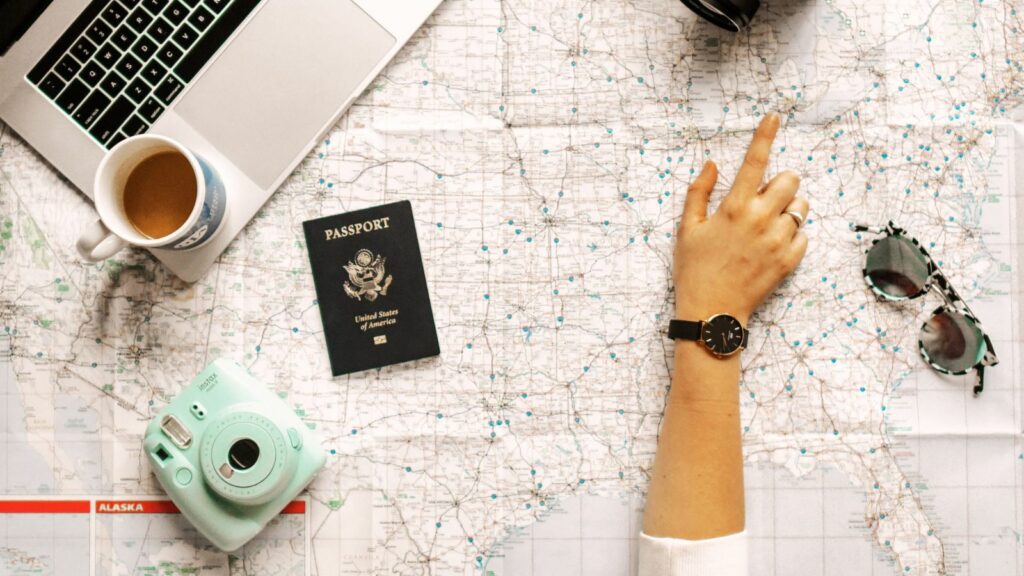
Step 2: Research!
Once you have a list of specific things you want to do, it’s time to get information.
You’ll want to know a few things:
- How much does this thing (tour, activity, general area) typically cost?
- Are there any restrictions on health or age?
- Is there any date restrictions, or seasonal or weather issues?
- What’s the visa situation?
The answers to these will help determine what order you’ll move around, generally speaking. If you need a visa and it takes four months to get, then obviously you can’t plan to be in that country next month.
Also think of your personal situation. If you have to be UNDER a certain age, or particularly active, to do a certain activity, then doing it when you’re younger and healthier makes it higher priority. I put anything where I have to hike or do strenuous activity under this category, for instance. Some tours have age limits as well, where you can’t be over, say, the age of 70.
Note down any specific dates. Perhaps there’s festivals you want to go to that only happen every two years; you’ll need to know those dates. Perhaps you want to go see the Olympics somewhere! Do a marathon in the Gobi Desert that only happens in a specific month. That sort of thing.
And if an activity is particularly expensive (or particularly cheap!) you’ll need to know that for budgeting purposes (covered later in this post).
Next you’ll want to research the best times to travel to the regions for the things on your travel wishlist. Just a general idea of when the hottest, rainiest, stormiest, or driest seasons are, and when TOURIST high/low/shoulder seasons are.
For some places, it’s basically tourist season all year, but perhaps the weather is a little nicer in the fall than in the summer. Write down specific month ranges for each location so you can start building a calendar attached to your travel wishlist.
To figure out what the weather is like, Google “country name (or city) weather month.” So if you wanted to go to eastern Europe in the fall, for instance, you’d google “Georgia weather October.” That’ll pull up both the weather forecast and temperature forecast.
Tourist season vs. off-season
For long-term budget travel, balancing your travel wishlist with the travel calendar means staying places slightly off-season.
Usually, it’s way cheaper to stay somewhere on a shoulder season, or even OFF season. However, fewer tourists sometimes means fewer tourist activities, and the things you want to do may not match. Swimming in winter is only fun if you enjoy ice!
Traveling during tourist high season usually means an increased budget, but it might be necessary for the specific activity you want to do. Some beach towns in Thailand, for instance, only have ferries going during high season.
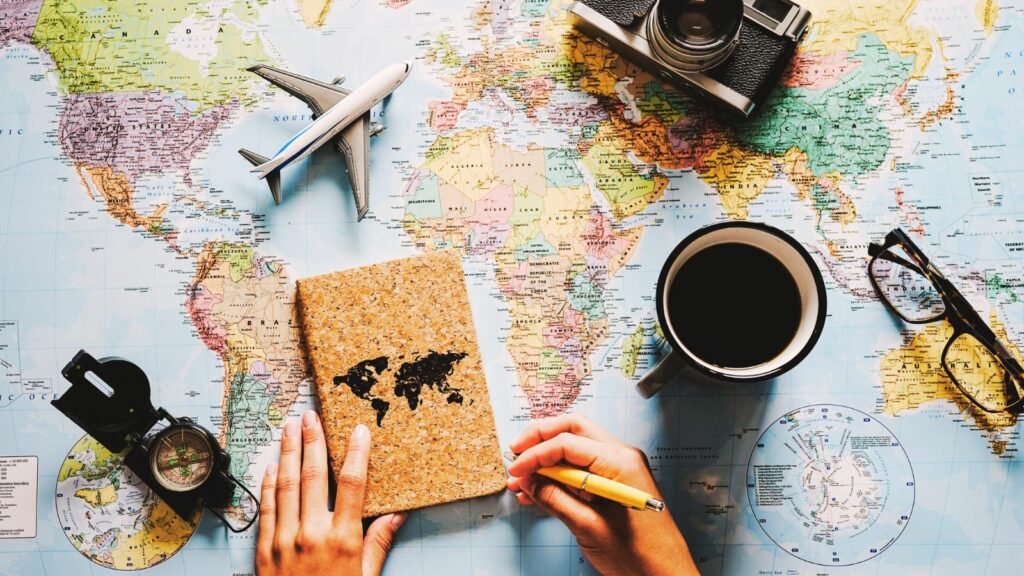
Step 3: Make your travel budget.
This’ll fluctuate as you decide on your needs and how you want to travel, but if you’re a budget traveler then you’re probably wondering how much it’s going to cost you to travel the world.
Honestly, this question is hard to answer because it really depends on YOU.
If you go to expensive locations and splurge on steak and champagne every day, then your budget will be HIGH.
If you go to cheap locations, stay in hostels and eat basic local meals of rice and veg, then your budget will be (relatively) LOW.
Generally expensive: Western Europe, USA/Canada, Australia, New Zealand, Japan, South Korea, Singapore, Africa if you’re not camping and/or self-driving, the Caribbean.
Generally less expensive: Eastern Europe, Mexico, Central America (maybe not Costa Rica), South America (except for Brazil), all of Southeast Asia (except Singapore and Brunei), Central Asia.
There are also ways to mitigate spending in higher cost countries by doing things like work exchanges or house sitting, which’ll cut down on accommodation costs and possibly even food costs!.
Benefits of slow travel
The best way to cut down on costs is to move slower.
Some people have high energy and want to go go go all the time.
However, long-term travel is different than a two week vacation. It’s easy to get worn out if you’re moving towns every three days. Eventually, you’ll be so tired of packing and moving that you’ll want to either give up and go home or you’ll turn into a Grumpy Traveler who hates everything.
Plus, you’ll be spending more money!
In general, traveling FASTER means you’ll be spending more on transit and accommodation.
Going slower will give you the chance to get discounted monthly rates or do work exchanges, and you won’t have to buy as many plane/train/bus tickets because you’ll be moving between locations less often.
For me, I prefer staying in same country for the whole length of my visa, or at the very least one month. If it’s an expensive country, I’ll pick one location and get a discounted monthly rental. If it’s a cheaper location, I’ll roam around a bit more and stay in hostels or guesthouses to balance out the transit costs.
I’ve posted several of my travel budgets over the years, to give you an example of how much you may need for certain destinations. Generally, my budget is an average of $1,500 USD/month.
You can get away with spending a lot less! But that often means staying in very cheap hostels with questionable beds, eating one big meal a day and taking buses or hitchhiking absolutely everywhere. People do it every day and they’re happy with it, but it’s not my travel style, personally.
For me, my comfortable budget backpacking travel style is:
- Staying in hostels but splurging for private rooms or monthly rentals about half the time
- Eating a mix of local food and cooking my own food
- Taking ground transportation over flying most times
- Doing free activities over paid, and saving my spending for a few big-ticket items
- Only buying postcards, clothing or small trinkets for souvenirs
So for me, that translates roughly to $2,000 USD/month in Europe and $1,300 USD/month for Southeast Asia, for an average of $1,500/month.
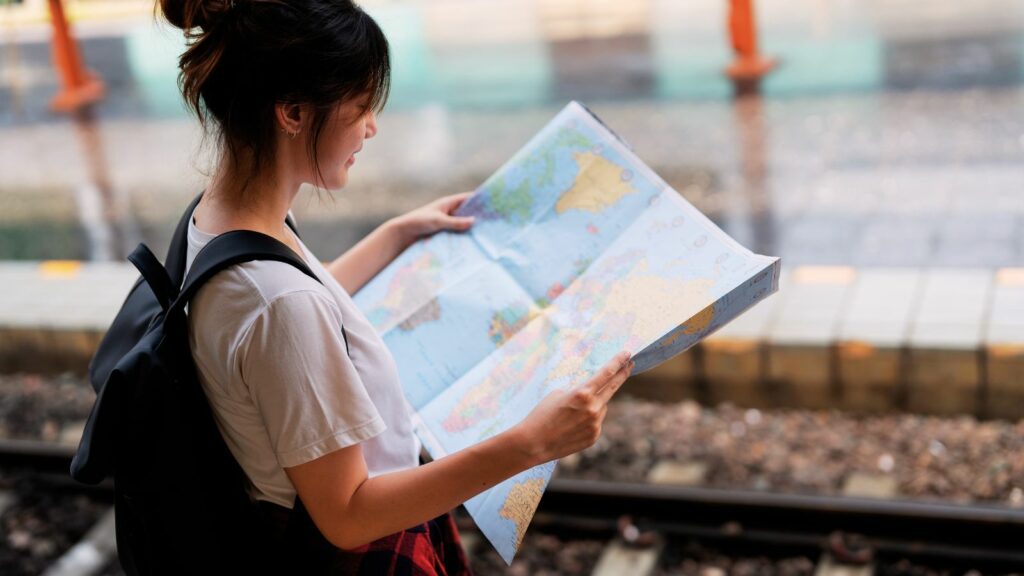
Step 4: Find your first destination.
This is the most nerve-wracking step, but it’s also the most FUN because it’s where you’re going to start your trip!
Check Skyscanner for “everywhere” from your home location and see what shows up around the time you want to leave. Is it some place you want to go? Is it a decent travel season? Congrats! Start there. Don’t overthink it.
Note: Do you have credit card points you can use for a flight? Pick the place that has the best rates. If you really can’t decided, use a random number generator.
If you haven’t signed up for a travel credit card yet, Chase Sapphire Preferred is a good one. You get a $50 hotel credit each year, travel protection for lost luggage and delays, plus 3x points on travel spending.
There’s no wrong choice. The important part is just get started! Once you have a starting point, you can start filling in the rest.
Next, find your second destination. Ideally, it’ll be close to your first one.
Search Skyscanner and see where you can go. Check transit options between your first destination and your second destination. Consider ground transit like train, slow boat, bus. These sorts of things make for great experiences and good stories!
Connect the dots from one country to the next until you have a rough outline for the whole year.
Step 5: Start building your ideal travel calendar.
Once you have a wide view of where you’re going over the year, it’s time to narrow down into 3 month chunks for detailed planning. This’ll keep you from going insane trying to find hotels, tours, flights, etc. 10 months before you need them– as you’ll only need to plan in detail 4 times over the whole year.
(If you’re a precise planner, then you probably want to plan a lot anyway and maybe you WILL have the whole year done and booked. For people like me, who like to have wiggle room for joining group tours or taking advantage of surprise discount flights, etc. and don’t need to plan more than a few months at a time, 3 months is enough.)
Planning for the year
First, using the information you gathered above, make a general outline of where you want to go throughout the year.
Consider visa lengths, estimated expenses, whether you can offset them with work or volunteering, and so on. You’ll probably want to stay longer in places that cost less, and not as long in places that cost a lot.
Be sure also to add in important personal dates. Do you want to go visit family for holidays? Have to go to a wedding? Add those dates into your calendar.
You can use either Google Calendar, a spreadsheet, or even a regular paper planner. Whatever you’re comfortable with! This will now hold your travel calendar.
Now that’s all settled, and you have your first couple destinations picked, start planning the next 3 months.
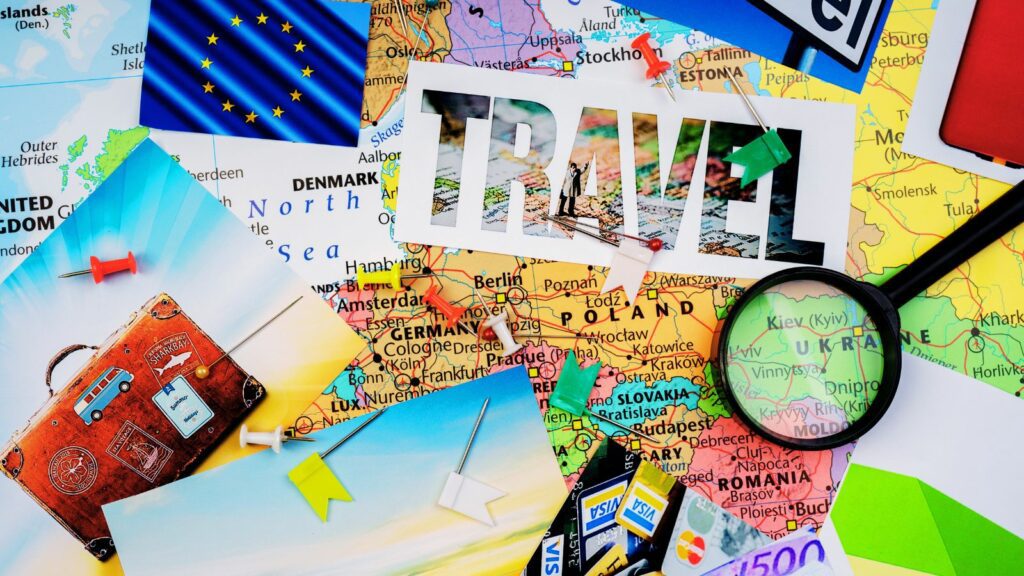
Planning the first 3 months
First, decide how long you want to stay in your first destination. If your visa lets you stay at least a month, aim to stay for the whole month. You can always leave earlier or stay longer if you want, so don’t stress about this part too much.
Second, narrow down cities that would be good to stay in.
Make a list of 5-10 places that you REALLY want to visit. Use Google Maps to mark those places, then see where the big groupings are. Are they near a nice city that doesn’t cost too much? Congrats! You found somewhere to stay.
Decide on 1-3 places to focus on during your month(s) in that destination.
Next, research accommodation.
You’ll want to find one or two places to make a base. Pick one of the places you marked before, and see what the cost of living is like. Remember, tourists usually pay a bit more than locals, so add a few hundred $ to whatever the cost estimate is. If it’s too expensive, look at nearby towns. Can you commute in from them to the larger city?
Look up accommodation in those locations– and not just hotels! Check hostels, furnished apartments, AirBNB, etc. Write down prices. Get recommendation from people if you’re really stuck– Facebook groups are a great way to ask for advice.
TIP: People will always recommend the same few cities regardless of what TYPE of travel you’re looking for. Beach towns are very popular, but if you never go swimming then staying there is a waste of money– in my own experience! You’re not missing out if you skip those places that don’t fit your travel goals. Just something to keep in mind.
Step 6: Book your travel
Now start booking. Unless its a big ticket tour with limited space, you can get away with booking only 3 months ahead of time. Of course, try to find places and companies with good cancellation options. Purchase trip insurance for extra coverage when possible.
Book your airplane ticket to your first destination. After that, make sure you don’t need to book a transit ticket far ahead of time. It’s easy to get cheap tickets in some places and you don’t necessarily need to book months before, but in special cases it’s better to book early. For instance, the Eurostar train is much cheaper if you book as early as possible.
TIP: Try to avoid making BIG hops between locations. It’s cheaper to move between nearby countries.
Join expat FB groups for your first country. This’ll help you make connections when you’re traveling, and you’ll get ideas for places to go or even discounted accommodation. One month before going to your next country, join the FB groups for THAT one so you can start making more connections.
General Nomad Life Tips
Be flexible! Have a general idea of where you’re moving to, but let yourself change it up when needed. You may love a certain country and want to stay longer or come back to a different part. Or you may get invited to go somewhere and want to join in. The more flexibility you have with your schedule, the more possibilities for adventure.
You can’t see everything. Accept that and don’t run yourself ragged. You can always go back and see whatever you missed the first time.
Follow warm weather for easier packing. If you run into cold weather, you can always buy clothes there.
Anything you want to do, someone else has already done. Ask in travel groups for advice and you’ll be sure to get it!
Save to Pinterest
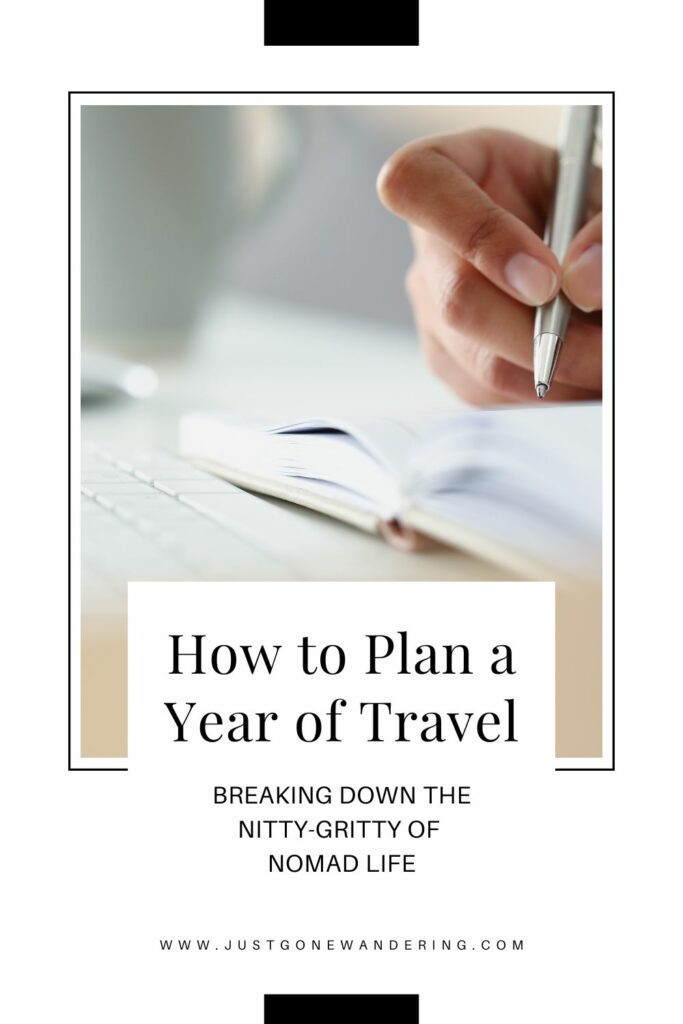
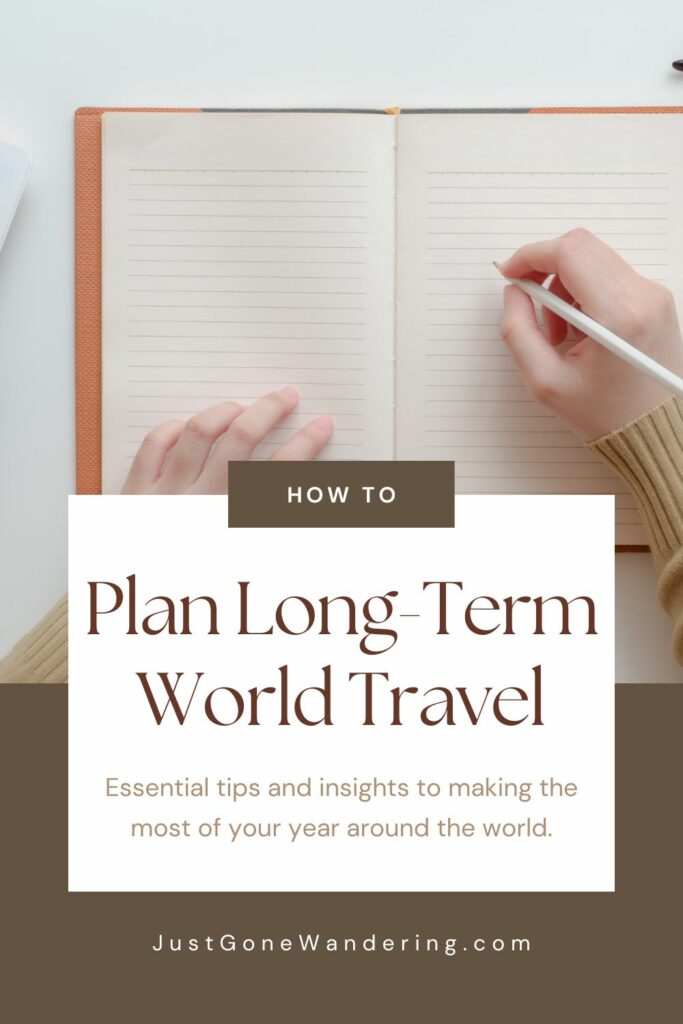
Explore More
- Libraries for nomads | Non-resident library cards
- How to make friends while traveling solo
- How to keep in contact while traveling abroad
- Safety tips for solo female travelers
- 90+ Active Facebook Groups for Travelers
- The BEST WhatsApp Travel Group Chats
Best Travel Resources
- 👩💻Stay organized with the Deluxe Travel Planner Spreadsheet
- 🛌Search Hostelworld for budget stays
- ✈️Search SkyScanner for discounted flights around the world
- 😺Join TrustedHousesitters and do petsitting in exchange for accommodation
- 💳Carry Chase Sapphire Preferred for a travel-friendly credit card
- 📱Use Airalo for eSIMs around the world
- 🚙Check DiscoverCars for international car rentals
- 👩💻Snag ExpressVPN to stay safe while browsing the web
- 🧑⚕️Sign up with VisitorsCoverage for trip insurance


